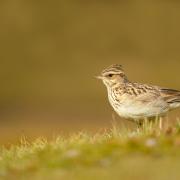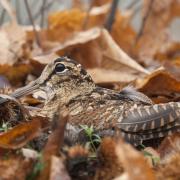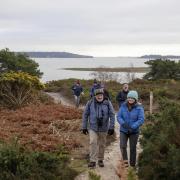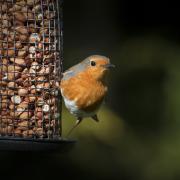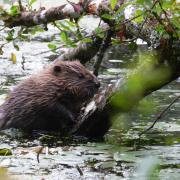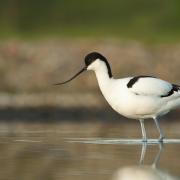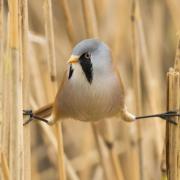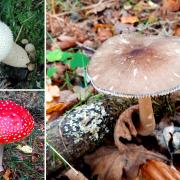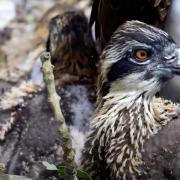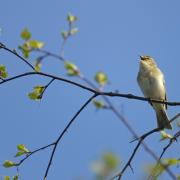Could apartment living be the answer for these former barn dwellers? Join Dorset Wildlife Trust’s campaign to restore our beleaguered barn owls
There can be few bird calls more emotive than the hoot of an owl or in the case of the barn owl an eerie, drawn-out shriek. Owls are among our most recognisable and best-loved birds and barn owls were recently voted Britain’s favourite farmland bird in an RSPB poll. Sadly, the barn owl population was at a record low in 2013, after a long decline in numbers; the UK barn owl population fell by an estimated 70% between the 1930s and the 1980s.
Bad weather has contributed to this decline as Emily Newton, conservation officer at Dorset Wildlife Trust (DWT), explains barn owls are particularly vulnerable to extreme weather. “Cold winters and springs have an impact because the grass doesn’t start growing very early, so the vole population drops off,” says Emily. “And we’ve recently had not only cold winters but wet summers. Barn owl feathers are evolved for silent flight and when they get wet they take ages to dry out; a wet owl’s body weight can go up by 77% making it extremely difficult to fly – and if they can’t fly they can’t hunt.”
The weather isn’t the only factor contributing to the decline of barn owls. Emily also cites loss of habitat. “Barn owls eat small mammals such as voles, shrews and mice, but their main prey is field voles which need a deep litter layer in the grass. You won’t get nearly as many voles where there are arable crops or where silage is cut. They need rough, grassy field margins, which were encouraged under previous farm stewardship schemes, but the schemes have changed and we’ve now seen a loss of these margins.”
Owls also frequently fall victim to traffic. The feathers that give their faces such a distinctive heart shape also reflect sound to their ears – so when they are hunting, they fly looking downwards, listening for prey, at vehicle bonnet height. “On average, barn owls lay four to five eggs but only a quarter of the fledglings survive to a year old,” says Emily. “Some of them starve, especially if the weather is bad, and a lot die on the roads – I’ve seen a barn owl nearly taken out by a lorry on the A35 outside Dorchester.”
In June last year DWT launched an urgent appeal to provide help for barn owls in the county, aiming to raise £27,000. The response was enthusiastic, with online donors leaving messages such as - “Great appeal to help these stunning birds” and “We must not lose our barn owls” – and 100% of the money raised is now being used to fund a barn owl support programme that will run over the next two years. The good weather over the summer of 2014, plus a veritable vole bonanza encouraged by the sunshine, meant that some owl families even managed to raise two broods, but, says Emily, it’s important to look to the long term. “We need the barn owl population to be robust and strong enough to withstand extreme weather, and we can do this by ensuring there is appropriate habitat and nest boxes right across Dorset.”
With that in mind, DWT is looking for volunteers to help make owl boxes that can be sited in barns, in trees, or on poles, and is planning a series of volunteer days over this year, at its Brooklands Farm headquarters near Dorchester and its Urban Wildlife Centre at Beacon Hill, just outside Corfe Mullen. The boxes are designed with owlet safety in mind, with high openings so that the baby birds can’t fall out – a youngster that tumbles from the nest before it’s able to fly will be ignored by its parents.
You don’t need to be an expert carpenter to put together an owl apartment, says Emily. “We’ve got all the materials cut to size, so it should only take an hour or an hour and a half to make some of them. For anyone looking for more of a challenge, some of the outdoor tree boxes need a bit more skill; we supply materials, dimensions and instructions. We will know where the boxes go, so people who have made them can follow their progress and find out if any owls have taken up residence.”
The boxes will be widely deployed and, once next year’s agricultural environmental schemes are made available, DWT will be able to help farmers manage their land with owls in mind. “Farmers really like barn owls – they all love to have a resident barn owl nesting on their land,” says Emily. While boxes are crucial for building up the depleted population of barn owls, the birds usually make their homes in hollow trees, and, as their name suggests, they also appreciate agricultural buildings near the meadows where they hunt. Their family home is somewhat unconventional; they don’t build a cosy nest. “Where there’s a thick wall with a gap below the roof, they’ll sit on top and roost there,” says Emily. “When they find a mate, they’ll make a small nest from their own ripped-up pellets, they really don’t need a lot of space.”
They’re also very happy in modern barns. “We’ve got barn owls at our Lorton Meadows reserve; we made an entrance and now they are in residence. So space for owls can easily be incorporated into new buildings if there’s suitable habitat nearby.”
Funds from the DWT campaign will also go towards raising awareness of the barn owls’ plight, adds Emily, via talks on ecology and diversity. “We’d also like people to send in sightings so we can get a better idea of the Dorset barn owl population.
Two Dorset barn owls whose movements are definitely not under-recorded are Bob and Brenda, the stars of the ‘owlcam’ set up in an owl box at the Lorton Meadows reserve, they even have their own very popular Facebook page. Bob and Brenda successfully raised a healthy brood of chicks in 2014 – hopefully their offspring will survive and thrive, and boost Dorset’s population of these beautiful birds.
Meet Bob & Brenda
You can follow the famous barn owl couple’s own webcam on facebook.com/pages/Bob-Brenda-Barn-Owl-Cam/111139658915029 or visit dorsetwildlifetrust.org.uk for news of new barn owl residents in 2015.
***
READ ON
• Why 2014 was a year to remember for wildlife in Dorset - From battering storms and barrel jellyfish to an award-winning island and record flocks of spoonbills, Dorset Wildlife Trust’s Sally Welbourn reflects on 2014 - a year to remember
• Making wildlife welcome in the garden this winter - From feeding a charm of goldfinches to providing a cosy home for a hedgehog, if you make your garden a winter haven for wildlife you will reap the benefits in the spring
• Why lifting the neonicotinoid ban could be a disaster in the making - Recent reports claim the neonicotinoid ban is jeopardising our oilseed rape crop. So should we lift the ban? Brigit Strawbridge tells us why this is a disaster in the making








